How to grow turmeric – get fresh harvests of this superfood by growing it outdoors or indoors
You can get a a bumper crop of turmeric by growing the plant in the ground or in pots, depending on your climate
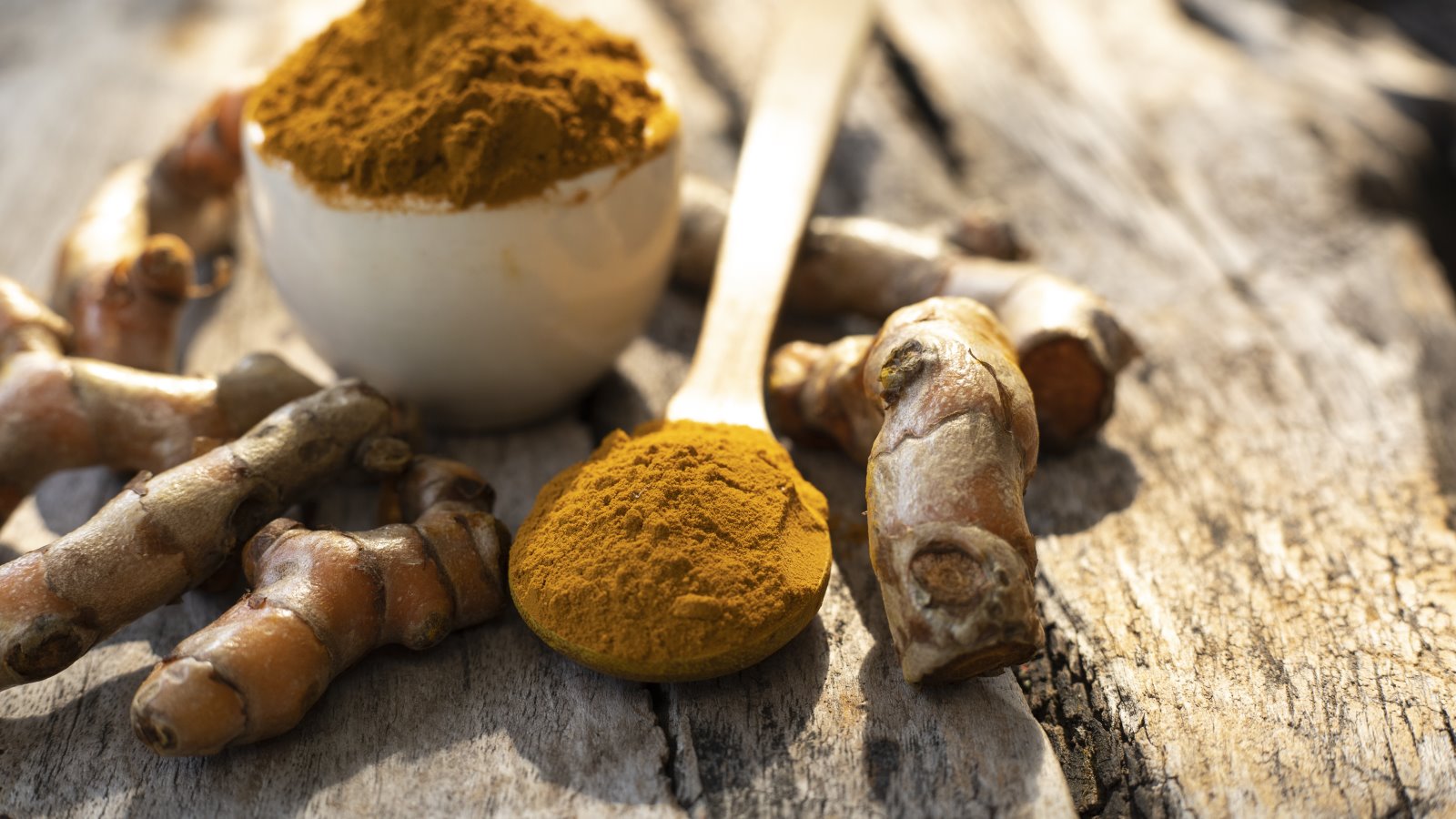

Turmeric is a tropical plant that has been used as a spice for thousands of years, and it has become increasingly fashionable in recent years thanks to its well-documented health benefits.
As well as being popular in Indian and south-east Asian cooking, turmeric is loved for its medicinal properties. It is hailed as being anti-inflammatory as well as potentially beneficial against arthritis, cholesterol, and heart disease.
When it comes down to how to grow turmeric, the method you follow will likely be dictated by your climate. These are plants that love warmth and need lots of it over a long growing season. You can try growing them outdoors in the ground, or start them indoors in pots to move outside for the summer.
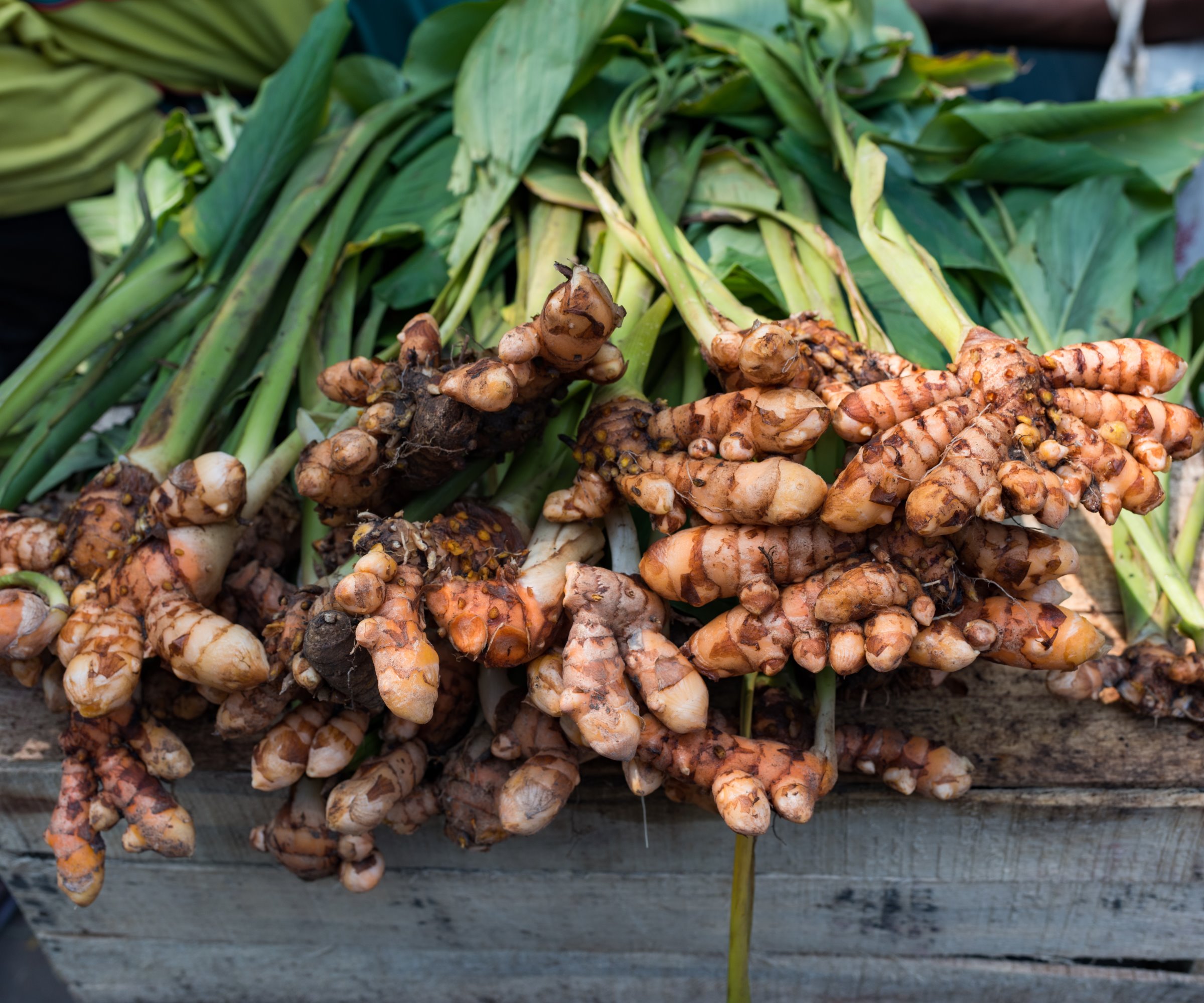
The turmeric rhizome is harvested for use
How to plant and grow turmeric
Turmeric is an ideal plant for tropical gardens that can be grown as a perennial in US hardiness zones 8-11. It is in the same family as ginger and produces a flush of large, beautiful foliage, distinctive flower spikes and, of course, the rhizomes that are harvested. If you are thinking about how to best grow turmeric, here is our in-depth guide on how to plant and maintain it for a healthy root crop.

Turmeric foliage can grow over three feet tall
How to plant turmeric
Turmeric is grown from rhizomes. These fleshy structures are similar to an underground stem; they grow under the ground and store the plant’s energy so they have everything they need to produce roots and grow new plants.
Healthy rhizomes should be plump and feature at least two or three buds - the rhizomes can be divided into sections to plant as long as each features at least one bud. You can buy turmeric rhizomes in stores or online. You can even can plant turmeric bought from a store, providing it is organic.
Tammy Sons, from TN Nursery, advises that turmeric should be planted outdoors in spring ‘when all signs of cold snaps are gone’ and night-time temperatures are above 50°F, as plants can die when temperatures drop below that level.
You can start turmeric indoors earlier if you live in a colder area. Rhizomes can be planted in a greenhouse in late winter or early spring and need temperatures of 75-85°F to grow. It may be required to use a heating pad or artificial lights to germinate them indoors. Once the dangers of frost have passed for your area, then you can transplant the seedlings into their final growing spot.
Tammy Sons adds that turmeric should be planted on a mound to help improve drainage as the plants are ‘highly prone to root rot’. She says: ‘The rhizomes need to be planted 3-4 inches deep below the soil surface.’
When planting turmeric rhizomes or young plants, they want to go into the soil spaced three feet apart as the plants can grow quite large. When planting rhizomes, it is important to make sure the buds are facing upwards towards the soil surface.
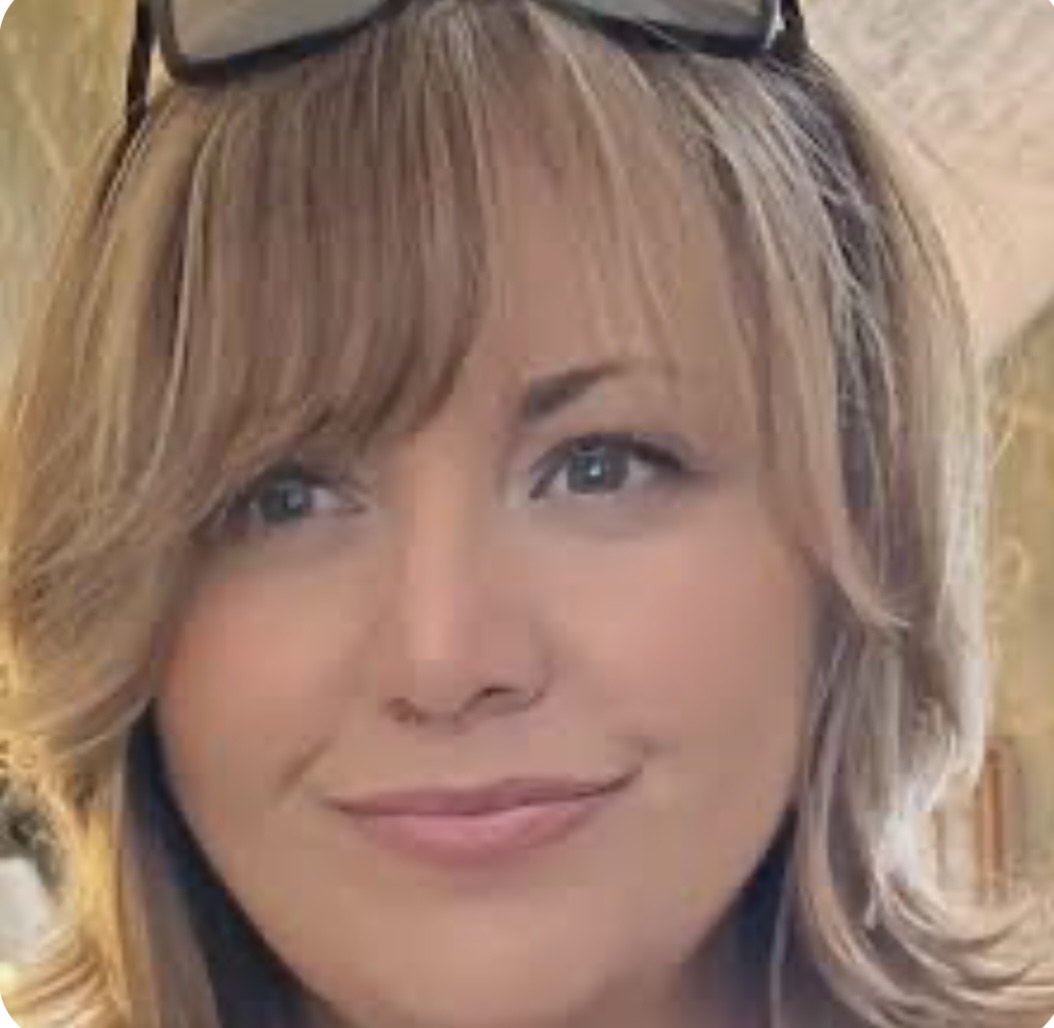
Tammy Sons is the owner of Tennessee Wholesale Nursery, a third-generation family business based in Tennessee that grows an extensive selection of trees, shrubs, flowers, and other plants.
Turmeric Curcuma longa | Available at Burpee
Turmeric rhizomes to be planted in full sun or light shade. It produces lovely large green and white three-petaled corollas amid the lance-shaped leaves. The rhizomes can be lifted and either replanted or used for culinary or medicinal purposes.

Rhizomes can be cut into smaller pieces to plant
Where to plant turmeric
As a tropical plant, turmeric wants a warm and sunny spot in which to grow. It prefers at least six hours of sunlight a day and temperatures of 68°F - 86°F.
The plant wants a rich soil in which to grow, with a slightly acidic to neutral soil pH of between 6.0 to 7.5. Lars Nyman, an experienced gardener and founder of Taim.io, reiterates that drainage is very important so you need to ensure turmeric is planted in soil that ‘lets water drain away easily’.
He says: ‘You don't want the water to get stuck around the rhizomes, as they can rot if they stay too wet. A mix of organic compost and potting soil works well and adding some sand or perlite can improve drainage.‘
The addition of well-rotted manure or compost will help to improve the soil drainage and structure as well as provide essential nutrients to plants as they grow.
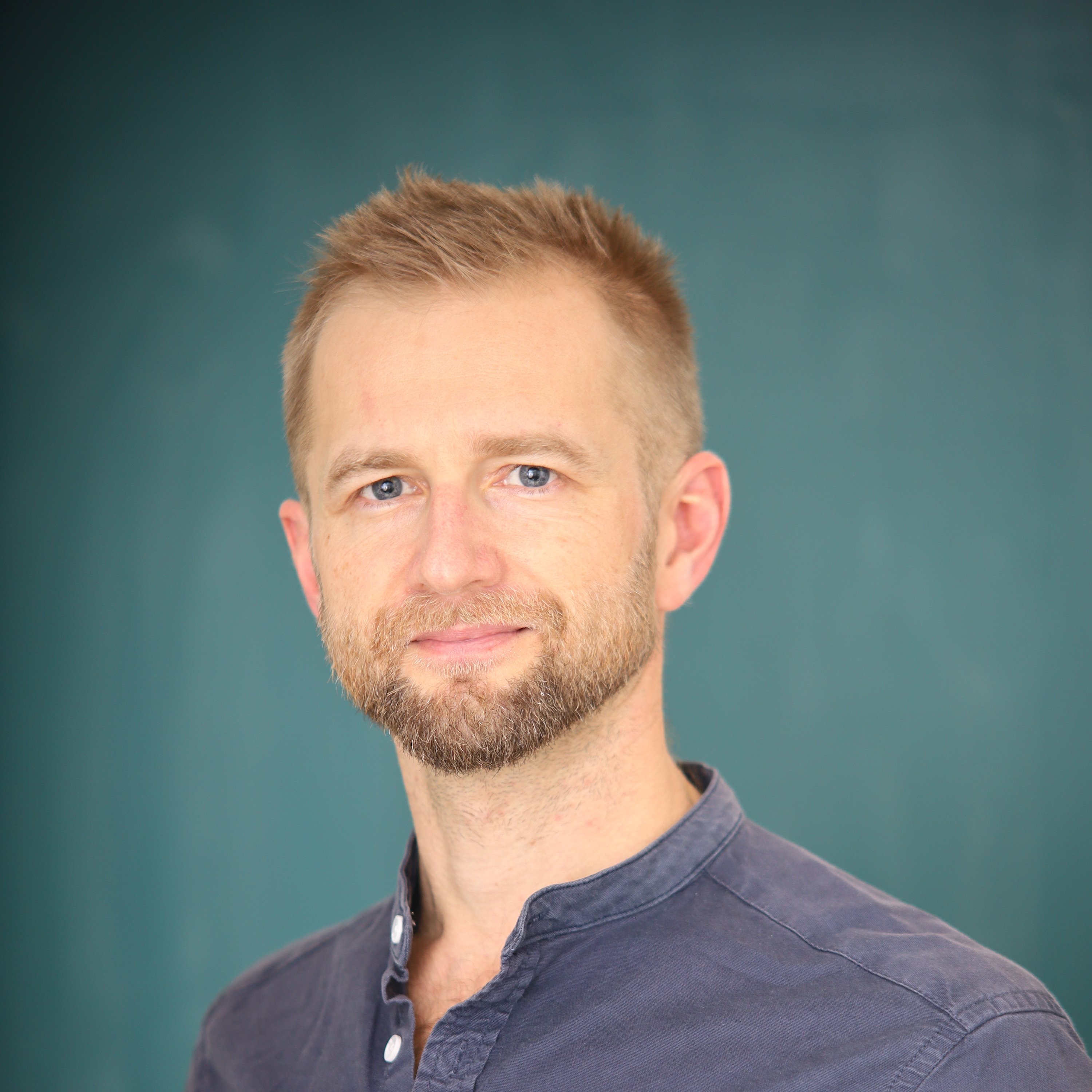
Lars Nyman is an experienced gardener and the founder of Taim.io, the gardening site that teaches people how to grow. He is a is a start-up veteran and has a lifelong passion for gardening & agriculture.

Turmeric plants want to grow in moist soil
How to care for turmeric
When it comes to watering plants, it is important to monitor them carefully and keep the soil moist but not waterlogged. Any watering schedule should be consistent during the growing season to avoid the soil drying out.
Turmeric can benefit from the application of a balanced slow-release fertilizer during the growing season. This can provide all the essential nutrients required for healthy growth and development. Avoid using feeds that are really high in nitrogen, as this will promote the growth of lots of foliage at the expense of the development of the rhizome. An example of a type of feed that could be used is the Schultz All Purpose Slow-Release Plant Food, available at Amazon.
When it comes to harvesting turmeric, it does have a long growing season and turmeric will be ready to harvest around eight to ten months after planting. When it is ready to harvest, you should see the leaves and stems starting to turn yellow and drying out. This tends to come after the first frosts.
To harvest turmeric, Robin Phelps, gardening and preserving coach at Sow Many Plants, advises: ‘Carefully dig around the rhizomes, avoiding damage. Harvest the entire plant, and gently remove soil without washing the rhizomes.
‘Allow harvested rhizomes to air-dry for a week, then store them in a cool, dry place. This curing process enhances flavor and extends storage life.’
Lifted rhizomes can be used to grow next year’s crop. Select some of the healthiest rhizomes that can be cut up into smaller pieces to replant.
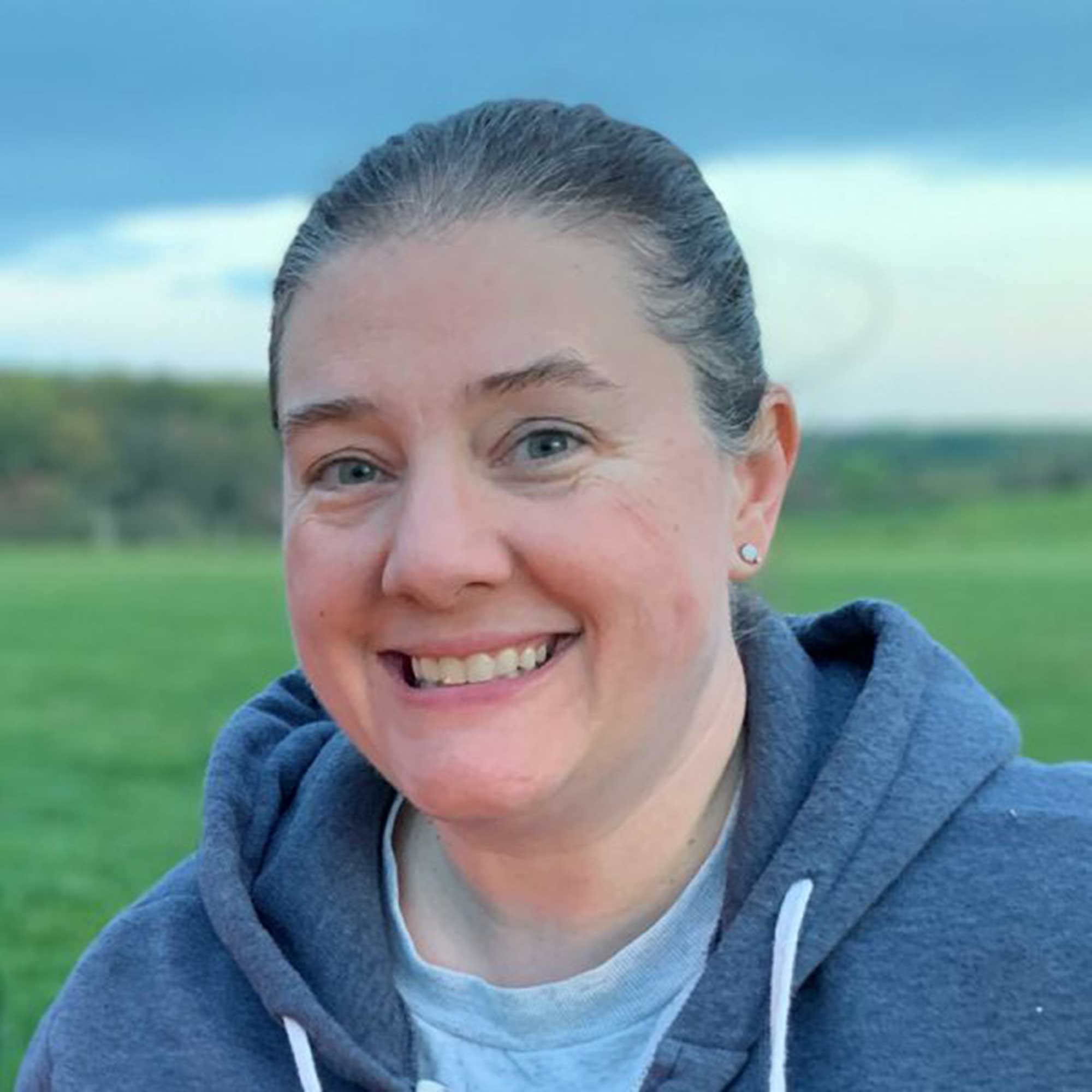
Robin Phelps is a Gardening and Preserving Coach at Sow Many Plants, with over 20 years of experience in the gardening industry. She specializes in growing fruit and vegetables, with a dedication to teach others how to preserve and keep what they grow.
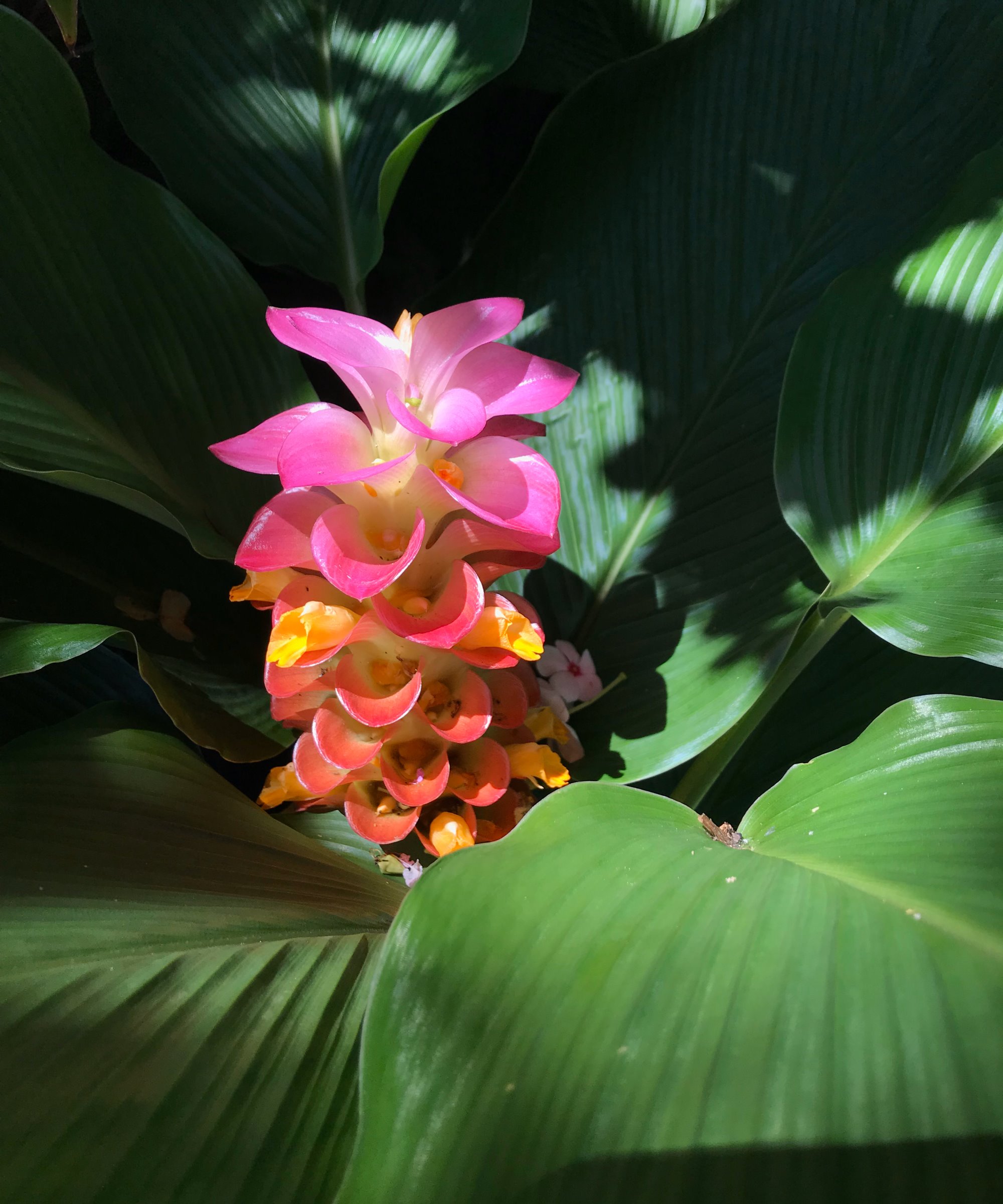
Turmeric blooms appear on a flower spike
How to grow turmeric in pots
Turmeric can be grown in containers in colder climates, it is advantageous as plants can be started indoors and brought out when the weather gets sunny. It is important for any pot to be large, at least 16-18 inches wide and 12 inches deep, to assure yourself a decent harvest of turmeric. A large and wide plant can be enough for a couple of rhizomes. Make sure that any containers have holes in the bottom for drainage and fill it with a free-draining potting soil.
The rhizomes can be planted indoors in late winter and early spring and started in the warmer, protected environment. The pot can then be brought outside when the temperatures consistently rise above 50°F at night. If you are growing turmeric in pots, it is important to check the moisture levels a few inches down when watering plants in containers. This will help avoid overwatering plants and roots rotting in sodden soil.
Pots can be moved back indoors to overwinter once the temperatures drop. If you have not grown the plants to harvest, then simply cut the foliage off and store the pot somewhere where the temperature remains above 50°F. Water sparingly throughout winter and the plant will start growing come spring, ready to move outside again when the temperatures rise.

Turmeric plants can be bought in stores to grow on at home
How to grow turmeric indoors
Turmeric can be grown indoors year-round but can often benefit from being moved outside during the summer months. If you do live in a cooler climate, growing turmeric indoors as part of planning a greenhouse, in a conservatory, or on a windowsill in the warmest part of the house, can make it easier to maintain the warmth required throughout its long growing season. Plants grown in containers indoors need to be monitored and kept well-watered, while, as turmeric also likes humidity, an occasional misting of the leaves can be beneficial.
FAQs
How long does turmeric take to grow?
Turmeric does have a long growing season and needs seven to ten months of frost-free growing, from planting the rhizome to harvesting. Depending on your climate, it may be possible to give that much growing time outdoors - but remember that turmeric does not like temperatures dipping below 50°F at night. Otherwise you will need to start the plant indoors to ensure it can have the temperatures it craves during the entire growing season.
Can you grow new plants from a piece of store-bought turmeric?
If you wonder how to grow turmeric from store-bought turmeric, then it is possible to grow plants from rhizomes bought in shops. The important point to remember is that the turmeric is organic, as non-organic rhizomes are often treated with chemicals to prevent them sprouting and are not certified disease-free. Planting non-organic turmeric risks bringing diseases into the garden - if they ever do actually sprout. You also need to ensure that the piece of turmeric has buds on it to sprout from.
Growing heat-loving plants in a greenhouse helps provide them with the warmth which they crave to grow. While turmeric can benefit from being grown in a warm and protected space, some of the other best food to grow in a greenhouse include tomatoes, eggplant, chillies, and fruit such as peaches and apricots.
Sign up to the Homes & Gardens newsletter
Design expertise in your inbox – from inspiring decorating ideas and beautiful celebrity homes to practical gardening advice and shopping round-ups.

Drew’s passion for gardening started with growing vegetables and salad in raised beds in a small urban terrace garden. He has worked as a professional gardener in historic gardens and specialises in growing vegetables, fruit, herbs, and cut flowers as a kitchen gardener. That passion for growing extends to being an allotmenteer, garden blogger, and producing how-to gardening guides for websites. Drew was shortlisted for the New Talent of the Year award at the 2023 Garden Media Guild Awards.
-
 'Sexy disco-era Italy meets Japanese farmhouse in the Brazilian jungle' was the description the interior designer gave this glass-walled modernist home
'Sexy disco-era Italy meets Japanese farmhouse in the Brazilian jungle' was the description the interior designer gave this glass-walled modernist homeOffering a warm welcome that defies its stark, modernist lines, this archictectural gem is full of surprises
By Karen Darlow
-
 Are you making the most out of the estate sales in your area? These are the 5 most valuable items you should be shopping for
Are you making the most out of the estate sales in your area? These are the 5 most valuable items you should be shopping forVintage lovers and antique experts share the objects you should always look out for when you're exploring an estate sale
By Eleanor Richardson
